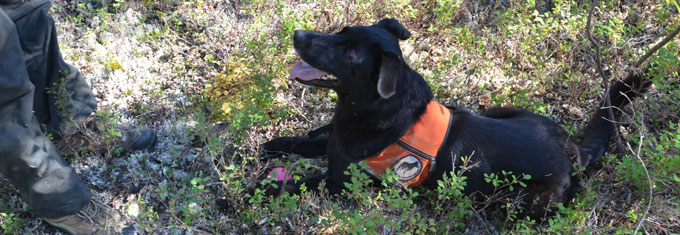The native Alaskan culture in this region is Inupiaq, and the local dialects of the Inupiaq language are being nurtured and perpetuated by school programs, university courses, mentorships, recordings, conversation, and documentation. A couple of the easier words to learn are qipmiq (kip-mick) which is the word for dog and anaq (awn-uck) which means scat, or feces. You have now learned two words that describe a 2011 research project in Kobuk Valley National Park. A third word would be silaluktuq, which means "rainy".
The Kobuk Valley Bear Project was designed as a small-scale study to glean information about the bears around the Great Kobuk Sand Dunes. Designed for park management purposes, the project is not large enough to generate a population estimate for Kobuk Valley. Instead, our primary objective is to look at the density of brown (Ursus arctos) and black bears (Ursus americanus) around this popular destination. Of course, being "popular" is relative in this remote country, as visitors to the dunes only number in the hundreds each year.

Though some objectives do, this particular project didn't warrant capturing and collaring the animals. In fact, the non-invasive techniques we used didn't even require that we see a bear while we were in the field. We used "conservation dogs" that are trained to detect specific plants, animals, or animal sign by scent. In this case, Wicket, Lily, and Orbee from Working Dogs for Conservation covered several kilometers per day looking for bear scat in hopes of being rewarded with a few minutes of playing with their ball. Dogs have been shown to find up to four times as many scats as humans, and conservation dogs are carefully trained not to touch the sample which can contaminate the DNA.

Once the dogs found a bear scat we collected portions of it for genetic and diet analyses. To collect the DNA sample we gently rolled a cotton swab over the scat, following instructions to start over if it begins to turn brown. Though it made us all nervous to go through this effort of finding bear scats and not return with anything brown for the genetic analysis, we did collect most of the scats to determine what they were eating. While we await the results we will share several stories from the fieldwork in upcoming blog posts.
